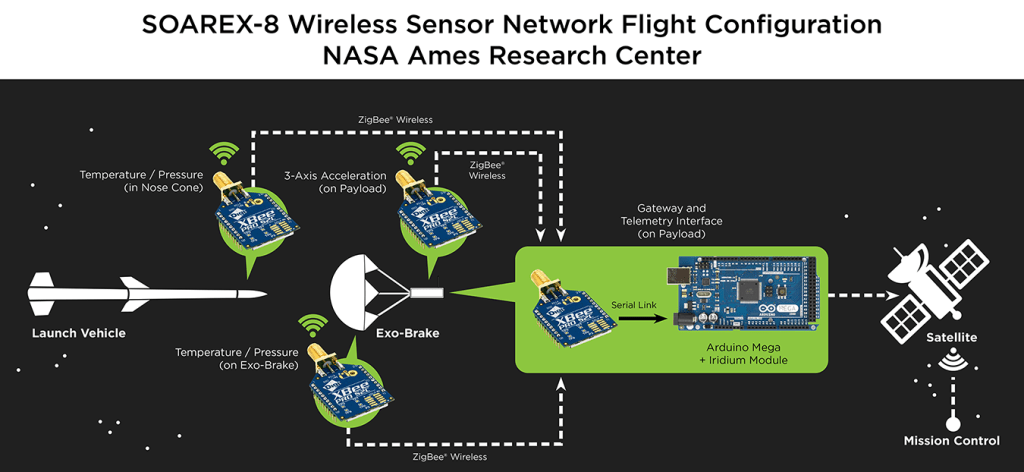XBee radios have rocketed into space! Early in the morning on July 7, NASA launched a NASA Black Brant IX suborbital sounding rocket from their Wallops Flight Facility. Onboard the rocket was an experiment running the very first wireless XBee network to leave our planet. Here’s a complete overview of the launch day:
The rocket carried the SOAREX-8 Exo-Brake flight test from NASA’s Ames Research Center in California, a kind of thin-air parachute for returning cargo from the International Space Station or for future landings on Mars. The XBee sensor network was used to collect temperature data, air pressure readings, and 3-axis acceleration parameters.
The NASA team retrieved these readings via an on-board gateway created with an Arduino Mega, XBee radio, and an Iridium module. The Arduino Mega microcontroller was used to manage communications between the local XBee wireless network and the long-range Iridium satellite uplink. All of these components were chosen as part of a NASA initiative to use commercial off-the-shelf parts wherever possible, and to employ rapid prototyping tools to efficiently explore new ideas.

The XBee network soared to an altitude of 206 miles before ending its maiden voyage in Atlantic Ocean after completing its duties. Since all data was relayed successfully back to Earth, NASA did not plan to recover the payload.
Here are some more stories on the flight:
- NASA Successfully Conducts Wallops Rocket Launch with Technology Experiments
- XBee and Arduino Sent to Space by NASA
- XBee Takes Flight at NASA Wallops Flight Facility
- Off-the-Shelf Components Connect NASA Wireless Experiment
- NASA uses Arduino and XBee to test de-orbitting technology
- XBees Soar into Space on NASA Rocket
